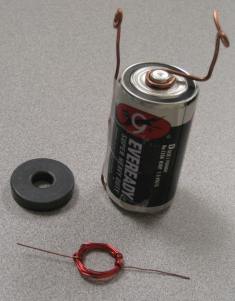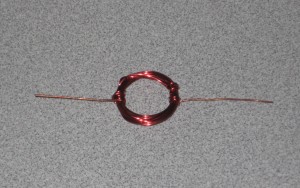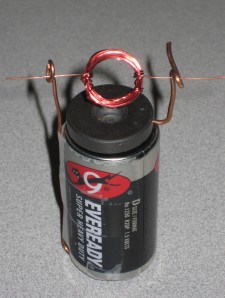Posts Tagged ‘Magnetism’
Interesting Magnetism Movie
Posted on: August 23, 2008
This is an interesting video I found somehow. I seem to be surfing a bit too much lately. Actually, I don’t surf, I Stumble! Yeah, you know what I’m talking about.
Anyway, this video uses animation of magnetic field lines to enhance live video. The result is so realistic I’m worried my students will think this is something we can see with the right kind of filter.
Take a look for yourself and give me some feedback.
http://www.semiconductorfilms.com/root/Magnetic_Movie/Magnetic.htm
Magnetic Field Lines
Posted on: June 6, 2008
This is pretty basic, but I find it worth doing. I am truly surprised by just how few of my students have ever done any experiments on their own.
This is simply shaking iron filing over a magnet. This can be done in one of two ways.
- You can do this as an activity where the students do this themselves. In this case, give them a couple of strong magnets with a clear North and South on the ends and a piece of poster board to put on top. Then they can shake the filings onto the poster board and then draw the lines in their notebook.
- You can do this as demonstration on the overhead projector. This is a little more challenging. I’ve done this with a regular overhead slide and it works ok. I’d like to try it with a more rigid piece of thin plastic, it’s really a pain holding the slide on the magnets and not having everything fall. The plastic needs to be thin enough that you can fold it up to pour the filings back into the jar.
I like doing this with a bunch of odd shaped magnets so they can see the lines of force and how they interact. They should do the magnets individually first, then in pairs.
Here’s a little tidbit: as you shake the iron filings onto the paper or overhead, gently tap the paper or overhead. The iron will jump to form the field lines. If you tap too hard, they will all move together, so do this very lightly at first.
Building an Electric Motor
Posted on: June 2, 2008
I do this more as an activity than anything else. I end up trying to cover electricity and magnetism in about two weeks, not anywhere near what is needed. I try to make the material relevant because it’s above most of the students in my conceptual physics classes. This is one of those activities where they amaze themselves.
I got the plans for an electric motor design from the book “Teaching Physics with Toys” by Taylor, Poth, & Portman. This book is really geared towards K-9, but I figure that if I find the activity cool, then why wouldn’t an 11th or 12th grader. I have the 1995 edition, they have a new edition that I haven’t seen. I don’t even know if this activity is in the new edition.
You can find similar activities on the web. (Build It: Electric Motor), but I like the design in the book better. Basically, you need a D cell, a doughnut magnet (available at Radio Shack), some bare heavy wire, like 14 or 16 gauge, some transformer or magnet wire (22-28 gauge), and a piece of sandpaper.
You take an arms length of the transformer wire, leave about 2 inches and wrap the rest around a dowel 5/8″ dowel or a white board marker, then leave another 2 inches at the other side.
As you may be able to see from the picture to the left, the leads are wrapped around the coil to tie it all together. It is important to try to balance the coil so that the leads are along the centerline of the loop. Next, sand the ends of the magnet wire so that the red coating is gone and you can see bare copper.
The magnet goes on top of the battery and will hold the top lead in place. You bring the negative voltage up with a bare copper wire, we use tape to hold the negative lead in place. Make a loop at the top of each with a pair of plyers. Try to make the loops on top at the same height so the motor doesn’t slide sideways.
To start the motor, just put it all together. You usually have to remove the positive lead to fit the winding coil into the loops. Put the leads back on and pop the magnet in place. If its really well made, the motor will begin spinning on its own. That rarely happens. Just give it a light spin. You will need to play with the leads to get them centered, but then when you get it right, it can run for hours.




Visitor Comments